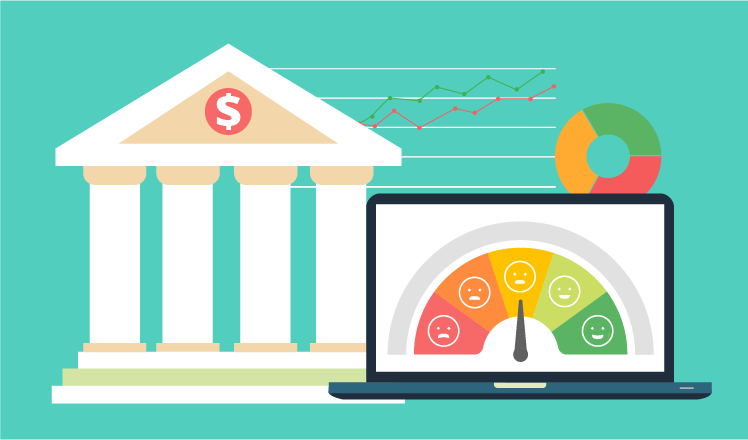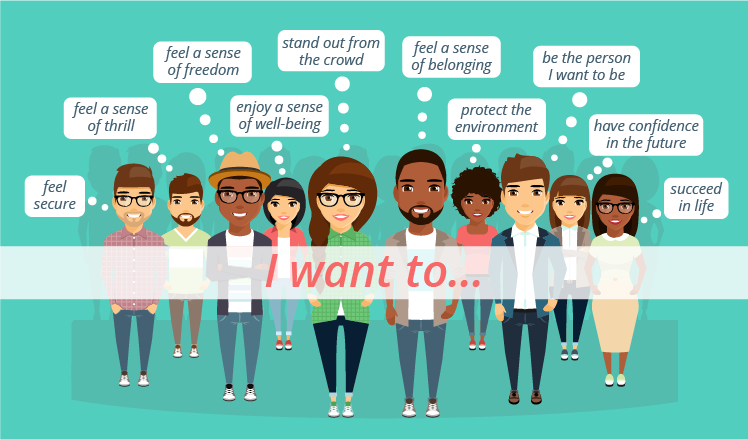Banks need emotion recognition software to increase customer loyalty
As the U.S. retail banking market demonstrates a heating competition for the biggest share of wallet, most banks see customer experience (CX) as their competitive advantage helping to grow the number of loyal customers. Though CX professionals have long been using numerous measurement systems and banking software solutions to increase customer loyalty, they seem to overlook one vital component: emotion-based market research.
Let's see why analyzing customers' emotions is a must for banks striving to provide excellent customer experience.

What customers say is NOT what they mean
As stated by Gerald Zaltman, a professor from Harvard Business School, 95% of purchasing decisions take place in the subconscious. However, later customers begin to rationalize these so-called gut-level reactions. That is why, when consumers try to explain what they need from a bank, their rational thoughts influence responses. As a result, the majority of customers typically mention only reasonable needs, such as convenience of branches, interest rates, partner programs, etc. thereby omitting real desires led by emotions.
Deep emotions increase customer loyalty
However, the most successful world's brands across various industries swiftly realized the power of emotions and brought to perfection the art of connecting with customers at the emotional level. These brands captured customers' hearts and minds by revealing their fundamental and thereby often unspoken emotional motives, such as the need to stand out from the crowd or to feel a sense of belonging, freedom, etc.
For example, Cottonelle Kleenex brand became internationally famous and gained millions of loyal customers thanks to a clever promotion featuring cute Labrador puppies. Aimed to evoke a sense of happiness, this marketing trick deeply resonated with customers making them loyal to such an unpretentious product as toilet paper. The launch of the Nike+ online community has deeply resonated with customers' desire to belong to a large group increasing their loyalty and the brand's revenue.

Why studying emotions is essential for banks
While the world known brands put much effort into exploring the inner motives and emotions that define customer behavior, most bank still hope to increase customer loyalty with barely perceptible means, such as offering slightly higher savings rates. This approach is doomed to failure from the beginning, as Millennials, the largest generation in American history, express no feelings of customer loyalty and think their banks cannot offer anything different from other banks. Thus, instead of focusing on short-term goals to increase the amount of deposits, banks should go for establishing long-lasting relationships with customers. As competently noted by Duena Blowstrom, feelings can pay off far better than numbers.
Establishing an emotional connection with customers, a bank can become a partner for customers rather than merely stay a place to keep their money. Though a checking account, CD or credit card themselves may not evoke the same emotional effect as, say, a pair of sneakers, it doesn't mean banks should neglect customers' emotions at all. To create deeper connections with customers, banks should not just offer a variety of loyalty programs. Rather, they should strive to become loyalty brands themselves like Apple or Nike do.
If banks underestimate the value of emotions, they risk getting distorted insights about customers' wants and needs and consequently may choose a wrong marketing and sales strategy. The consequences of such imprudence are numerous: from low return on marketing and sales investments to poor customer experience and customers' churn to another bank. Still, there's a chance to avoid these outcomes with the help of technology.
How to recognize and analyze customers' emotions
With our rich experience in banking software consulting, we've worked out a number of tips to carry out an in-depth analysis of customers' emotions.
To define which emotions trigger purchase behavior, the first step is gathering data about a particular customer segment (e.g., the Millennial generation, the most profitable group of customers). Depending on budget, a bank can focus on conducting retrospective CX surveys (e.g., NPS, CSAT or CES) or measure emotions in real-time. In the latter case, banks can choose among a wide variety of emotion recognition technologies, such as text, voice or image analysis software.
Text analysis software uses natural language processing to identify whether a statement is generally positive or negative according to the language style as well as keywords and their valence index. Banks can use this software to analyze customers' sentiments in their text reviews about products and the quality of their services. Voice analysis software uses recorded or live customers' speech to uncover tone and word content. Image analysis software detects facial emotions within a photo or video. To identify customers' expressions, image analysis software establishes relationships between points on the face and compares them with database files. Voice and image analysis software can be of great help in a branch providing real-time 'emotion data' for customer service representatives.
Once a bank finished with the first step, it's time to systematize and analyze 'emotion data'. Using data analysis software, based on statistical analysis techniques, such as multivariate regression and structural equation modeling, a bank can determine which emotional motivators correspond to a chosen focus group and which of these emotions create the most value for the bank.
After choosing 'the most valuable emotions', a bank should then anchor on it by creating consistent customer communications focused on this particular emotional need. At this final stage, every point of contact from content to customer service should reinforce customers' emotional perception of the bank. A bank that manages to link itself with customers' emotional motivators will communicate with customers more effectively thereby increasing their experience and loyalty.
Emotions are a universal language to connect with your clients
To achieve meaningful CX results, banks should use solutions for big data analytics and image recognition software to carry out an in-depth analysis of customers' emotions and adopt the results in their CX strategy. Taking into account customers' emotional needs will help banks to better engage with their customers, create deeper communications and build brand loyalty.

